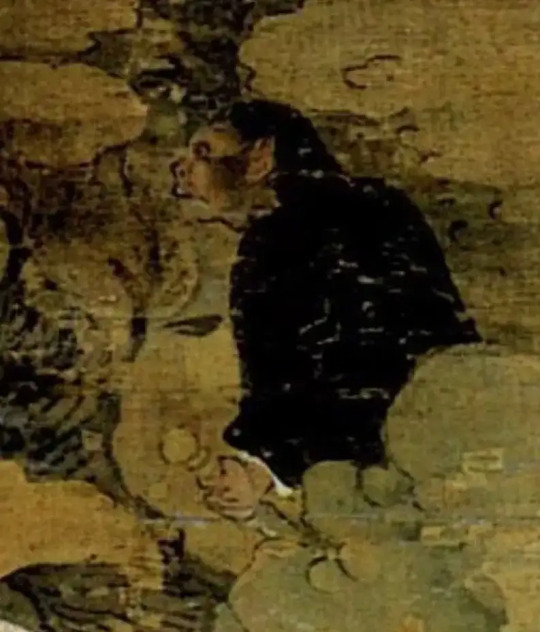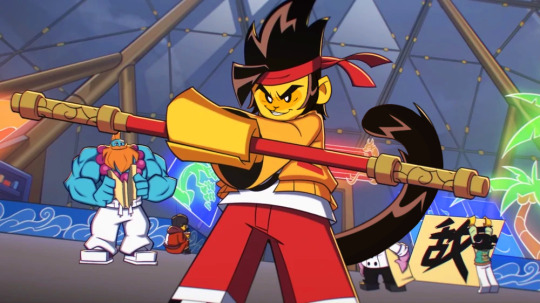#wubai
Text


𝝜𝗮𝗽𝗽𝘆 ⑤⓪⓪ 𝗙𝝾𝗹𝗹𝝾𝘄𝗲𝗿𝘀
人森島的人口最近突破了500小小的里程碑,
樂見追蹤數成長的同時盡量不被它綁架,
不管多少個500都別忘記最初純白的起點,
送給所有島民,謝謝你們🙇🏼
❤️🧡💛💚🩵💙💜
-
I am happy to see INSENDO’s population growing over 500 recently. No matter how many 500s there are,
do not forget the pure beginning.
Thanks to you all, INSENDO islanders!
-
-
-
#wubai#伍佰#純白的起點#typedesign#lettering#graphicdesign#chinesetype#graphicradar#typography#poster#typeposter#logo#logodesign#logotype#customtype#goodtype#graphik#文字設計#做字#作字#標準字#字體練習#字体#漢字#디자인#타이포#인생도#타이포그래피#포스터#로고디자인제작
3 notes
·
View notes
Photo

伍佰&China Blue 2021Rock star-高雄Encore場 延期兩次的演唱會 笨蛋如我第一次沒跟上搶票 又記錯延期釋票時間 從釋票後一直在觀望有沒有不能去的人讓票 跨年後已經抱著好喔!這次沒有緣下次再努力 小時候聽伍佰的歌 總覺得是一個酷酷大直男 彈著帥到不行的吉他唱著直球對決的情歌 長大後聽 發現那些雲淡風輕、灑脫的告白 都是因為曾痛到最深處,心痛至碎了,撕心裂肺,自我內化後再笑著說沒關係 堅毅霸氣的唱出「我決定愛妳一萬年」 怎麼會有人現在才知道自己原來超浪漫(太遲了吧!?) 今天的哭點是「與妳到永久」 迎著風,迎向遠方的天空 路上也有艱難也有那解脫,都走得從容 一安三部曲有夠感人,核彈級浪漫 「夏夜晚風+愛情的盡頭+Last Dance」 一個滿足的夜晚 2023用伍佰演唱會開啟 做個搖滾星也要有幸運星 更想當個無敵星星闖關都不用怕被扣血 #rockstar #concert #kaohsiung #wubai #encore #fullband(在 高雄巨蛋(K-ARENA)) https://www.instagram.com/p/Cm8dUSWvTPD/?igshid=NGJjMDIxMWI=
0 notes
Text
On the night of April 30, 1541, the Ming Ancestral Temple in Beijing was struck by lightning and burned to the ground. [...]
[T]he fires forced the Jiajing Emperor to resurrect one of the dynasty’s most expensive, difficult, and destructive projects: the logging of old-growth timber in the far southwest of China. Disaster struck again in 1556, when fires burned the Three Halls that form the central axis of the Forbidden City. The Three Halls burned yet again in 1584. Through the end of the sixteenth century, repeated damage to the imperial palaces forced reconstruction. Yet the lightning strikes in Beijing were also a disaster for the old-growth forests of the southwest, where the logs to build the palaces had first been cut in the early 1400s. As logging supervisors soon learned, ancient trees could not be felled on a regular basis. Officials pressed ever deeper into the gorges of southern Sichuan and northern Guizhou to find them, bringing massive transformations to the environment in the process.
---
The foundations of Beijing were laid between 1406 and 1421 by the Yongle emperor, a junior son of the Ming founder, who moved the court to his personal appanage in north China. [...] Grasping the sinews of power that connected his court to far-flung regions of the empire, Yongle pulled one million laborers to Beijing to build his palaces.
Because the weight of Chinese buildings is carried by their pillar-and-beam frameworks (liangzhu), monumental buildings required monumental trees (Figure 2). So Yongle also dispatched a similarly large labor force to the old-growth forests of the far southwest to cut the fir (Cunninghamia lanceolata) and nanmu (Phoebe zhennan) that grew straight and tall enough to be used for imperial construction.
We cannot be certain just how many logs were cut to build Beijing, but the figure must have been astounding. In 1441, two decades after the completion of the project, 380,000 large timbers were left over from the earlier construction. By 1500, these too were gone, used for repairs or too damaged by rot to be used for construction purposes.
---
In the sixteenth century, logging officials wondered how their predecessors had been able to obtain so many giant timbers. Li Xianqing, who supervised more than 40 logging sites in the 1540s, noted that large trees could still be found, but they could only be transported out with great difficulty and at great expense. The majority had to be discarded as hollow or insect-damaged.
Even when a quality log was found, it took five hundred workers to tow a log over mountain passes.
Skilled craftsmen were on hand to build “flying bridges” (fei qiao), stone-lined slip roads, and enormous capstans (tianche) to tow the logs up slopes (Figures 3 and 4). In the remote forests of the southwest, loggers faced attacks by snakes, tigers, and “barbarians” (manyi); “miasmatic vapors” (yanzhang, probably malaria); storms, forest fires, rockslides, and raging rivers (Figure 5). Labor teams had to carry their own food and often starved. At the rivers, logs were tied into massive rafts bound with bamboo for buoyancy, towed by teams of 40 men, and then launched on the three-year, three-thousand-kilometer journey to Beijing (Figure 6). Only a small fraction of the trees reached the capital in a condition where they could be used for palace building.
---
Expeditions exceeded their budgets up to fiftyfold.
One official remarked, “the labor force numbers in the thousands; the days number in the hundreds; the supply costs number in the tens of thousands each year.” Another saying held that “one thousand enter the mountains, but only five hundred leave” (rushan yiqian chu shan wubai). To make matters worse, logging mostly occurred within territory that was under only loose Ming control [...].
---
The Yongle Palaces were said to replicate the otherworldly atmosphere of the old-growth forests where their pillars originated. The presence of these timbers in Beijing linked the capital, materially and symbolically, to the southwestern landscape of cliffs and gorges where the trees had grown.
But ancient sentinel trees could not be reproduced on demand. The fifteenth-century logging project was a millennial event, removing the growth of hundreds or even thousands of years. Later officials were forced to come to terms with the transformations their predecessors had wrought in the ancient forests. Eventually builders had to switch to smaller, commercially available timber, using ornate artisanship and commercial efficiency to substitute for the austere majesty of the early Ming palaces, and the thousands of years of tree growth on which they rested.
---
All text above by: Ian M. Miller. “The Distant Roots of Beijing’s Palaces.” Rachel Carson Center for Environment and Society, Environment & Society Portal, Arcadia no. 39. Autumn 2020. [Bold emphasis and some paragraph breaks/contractions added by me.]
408 notes
·
View notes
Text
12th-Century Sun Wukong
I was happy to learn that the Monkey Pilgrim (Hou xingzhe, 猴行者), Sun Wukong's antecedent, appears among a large set of late-12th-century ritual scrolls portraying the famed 500 Arhats. [1] He is depicted as a monkey-headed, black robe-wearing figure with the lower half of his body obscured by clouds, making him hard to see unless you zoom in on the image. He holds what appears to be the head of a staff in his left hand (fig. 1). Our hero is located just behind Tripitaka, who is riding a white horse led by a spirit-soldier(?) or perhaps Sha Wujing’s antecedent (fig. 2). The full scroll shows this scene happening above the heads of four arhats (fig. 3), indicating that the Tang Monk is considered to be one of these Buddhist sages.
I actually found the simian immortal by accident while researching an article about Tripitaka’s Buddha title. Dr. Meir Shahar tells me that this depiction of Monkey doesn’t appear to have been mentioned in previous JTTW scholarship (personal communication, June 3, 2023). [2] Therefore, I’m so very happy that I can share this discovery with my readers!
For more ancient depictions of Sun Wukong, please see my past article:

Fig. 1 – A detail of the Monkey Pilgrim (larger version). From Lin Tinggui and Zhou Jichang, Images of the 500 Arhats (Wubai Luohan tu, 五百羅漢圖, 1178-1188 CE). Hanging scroll, ink and color on silk. Image from Nara kuniritsu hakubutsukan, Tōkyō bunkazai kenkyūjo, 2014, p. 86. Courtesy of Dr. Liu Shufen, a research fellow at the Institute of History and Philology, Academia Sinica.

Fig. 2 – A detail of Xuanzang on his his horse (larger version).

Fig. 3 – The full scroll (larger version).
Notes:
1) To learn more about these paintings, see Zhou (2021).
2) Dr. Benjamin Brose tells me that the painting appears in a Japanese source, but the Monkey Pilgrim is only listed as an “ape-like figure” (personal communication, June 3, 2023). See Nara kuniritsu hakubutsukan, Tōkyō bunkazai kenkyūjo henshū, 2014, p. 86.
Sources:
Nara kuniritsu hakubutsukan, Tōkyō bunkazai kenkyūjo henshū [Nara University Tōkyō Research Institute for Cultural Properties (Ed.)]. (2014). Daitokuji denrai gohyaku rakan zu [Daitoku Temple’s Tradition of the 500 Arhats Paintings]. Kyōto: Shitau bungaku.
Zhou, Y. (2021). The Daitokuji Five Hundred Arhats Paintings and Their Beholders [Master’s dissertation, University of Alberta]. Education and Research Archive. https://era.library.ualberta.ca/items/f0bf436c-f6e5-46a2-920a-91c8b9dd5ba9
#Sun Wukong#Monkey King#Monkey Pilgrim#Journey to the West#JTTW#Song Dynasty#Arhats#Luohan#Chinese art#Buddhism#Lego Monkie Kid#LMK#MK
68 notes
·
View notes
Text
Y/n and Soap speaking High Valyrian. Price and Gaz speaking Ubbi Dubbi.
Soap: "Y/n, Gaomagon pōnta gīmigon īlon're lying?." [Do they know we're lying?]
*Price and Gaz look at them*
Y/n: "Ziry iksos possible." [It's possible]
Gaz: "Why are you speaking High Valyrian?."
Soap: "Why are you speaking English?."
Price: "Alright then, Gaz, you remember when I taught you Ubbi Dubbi?."
Gaz: "Ubi dubo rubemubembuber." [I do remember]
Price: "Ubexcubellubent." [Excellent] "Dubo yuboubu thubink thubey'rube lyubing tubo ubus?." [Do you think they're lying to us?]
Gaz: "Thube wubay thubey'vube bubeuben ubactubing. Ubit's uba pubossubibubilubity." [The way they've been acting. It's a possibility.]
Soap: "Aye, stop it!."
Gaz: "You stop it!."
Soap to Y/n: "Gaomagon ao shifang zirȳ!?." [Do you understand them!?]
Y/n: "Daor." [No]
Soap: "Qrugh!." [Shit!]
#source: the big bang theory#but i changed a few lines 😅🤣#call of duty modern warfare 2#call of duty#incorrect cod mw#incorrect call of duty modern warefare 2022#incorrect call of duty modern warfare#incorrect call of duty#johnny soap mactavish#captain john price#kyle gaz garrick#cod x you#cod x y/n#call of duty x y/n#call of duty x you#cod#incorrect cod mw2#call of duty modern warfare 2022#call of duty modern warfare incorrect quotes
59 notes
·
View notes
Text
C-drama recommendation (part 2)
Helloo! I’m back with another post about how Chinese drama stole my heart. I randomly watched my favorite c-drama of all time: falling into your smile for the nth time. followed by reading fanfics in Ao3 because I just couldn’t get enough of it. I just feel I want more, more fluff and love.
soo I looked for another title I can binge watch (whilst I’m depressed because of my thesis lmao, procrastinating FTW)
1. Go Go Squid! (2019)

the story is about a girl, Tong nian, (genius, written in the official synopsis, but not really portrayed well in the drama) who fell in love with cool, hot-looking, older guy, Han, who happened to be famous. (It’s so lame how the girl just blindly followed the guy and not do her research first. I almost died from second embarrassment in the earlier episodes.) they started fake dating, and date for real.
what I love
the guy is hot, the K&K members also hot. (WUBAI my love)
the topic CTF looks fun and anti-mainstream
how tsundere Han is
the friendship portrayed nicely
how the drama literally focuses on the hugs, pats, (kisses in the latter episode), first kiss done abruptly which is so cute and real
10-year difference - kinda hot
the other characters are impactful
the misunderstandings in the earlier episodes are so funny
THE KISSES ARE SUPER HOT (cdrama classics)
What I hate
CTF looks fun, it’s shame that the competition just so fast, suddenly winning.
the flashbacks are so damn long
How Han is just so childish and mad all of the time
I just hope the awkward Han shown longer than the loving Han, because I felt it would portray Han’s character more (I know love can change people, but I hope for some dramatic and gradual changes)
I would rate 7,5/10.
I’d recommend but I don’t think I will watch it again when I’m bored
2. Go Go Squid 2: Dt. Appledog’s time (2021)

it’s like a spinoff of the first season, maybe you can say it’s in different universe. The story tells about the man, Wubai, who fell in love with Aiqing and joined robotics because of her (as she’s like goddess in robotics). she eventually fell in love when she met him for a competition. but suddenly Wubai gone missing.
this story is like Fluff, mutual pining, slow burn in one.
What I love
the main characters Wu bai and Ai qing are so damn beautiful
robotics looks fun, they showed the robotic combat very nicely
THE FLUFF oh my god. my heart was beating so fast, I screamed silently everytime they interact. SO FLUFFY I WANNA DIE
mutual pining and slowburn, it’s just like I want to push both of them together.
I love how he respect and care about her, his dedication to love and pursue her, portrayed beautifully in the drama.
just LOVE how he announce his love, especially the one when he changed the name of the competition for her, and how he showed everyone who were against of their relationship that he fell deeply in love with her and inspired him for 10 years by telling people what DT stands for
THEIR LOVING GAZES for each other like the world in only theirs
The pre-ending scenes in most of the episode, are so beautiful. they show how the progress of their love
It’s funnier than the first season.
how mature the couple is. no major misunderstanding.
IT REALLY SHOWS HOW PURE THEIR LOVE
THE KISSES OMG
it didn’t focus on the friendship, just their love, second couple’s love, with a some of robotics
What I hate
some of the other characters are not impactful. the face, and the acting are just meh
the head count for the K&K team is annoying (because they want to include Han, but he rarely showed up in the drama)
the settings look like studio
I would rate 9/10 because of the beautiful love story. nice plot. although cliche love story (but I just love it). (I’m just hopeless romantic)
This drama made me questioned myself, “where can I find someone like Wu bai?” he’s so pretty and unreal, and how he loves her so deeply made me drool in envy.
definitely recommend, and definitely watch it again whenever I want to watch some lovey dovey, fluffy, romance
That’s all for now. I must stop watching because I have to study lmao. C-dramas are so underrated while they have interesting plots and hot kisses. But I also hate how they have like 30++ episodes. it’s tiring and addicting to watch at the same time.
Bye for now!!
11 notes
·
View notes
Text
2020.11.20-29 → 2023.11.20
¡"蔡依林Ugly Beauty 2020 世界巡迴演唱會高雄站 World Tour in Kaohsiung Arena" cumple 3 años!
Ugly Beauty World Tour es la quinta y actual gira mundial de la carrera de Jolin Tsai, la cual comenzó el 30 de diciembre de 2019 en la Arena de Taipéi (台北小巨蛋). Esta gira está dirigida por The Square Division quienes previamente han colaborado con artistas de talla mundial tales como Katy Perry, Shakira, Sam Smith, entre otros. Originalmente los conciertos en la Arena de Kaohsiung, Kaohsiung estaban programados para el 10,11 y 12 de mayo, pero tuvieron que ser pospuestos debido a la pandemia y posterior confinamiento por el C19. Las entradas para las fechas en Kaohsiung se pusieron a la venta el 15 de diciembre de 2019 a las 12:15, y las 30 000 entradas disponibles se agotaron en cinco minutos. Durante los conciertos en Kaohsiung, Jolin presentó 4 nuevos outfits para los actos de THE ORPHAN, UNHINGED, DISCLOSURE y UGLY BEAUTY HEROINE, asimismo Jolin contó con los siguientes invitados: 頑童MJ116, 徐熙娣 Dee Hsu, 田馥甄 Hebe Tien y 伍佰 WuBai. De las fechas de los conciertos de Kaohsiung se desprenden dos videos en vivo: 辣台妹 Hot Chick / PLAY 我呸 / 幹大事 Big Thing Feat. 頑童MJ116 y 刻在我心底的名字 Your Name Engraved Herein Feat. 田馥甄 Hebe Tien.
ACT I – THE ORPHAN 孤兒
01 惡之必要Necessary Evil
02 甜秘密 Sweet Guilty Pleasure
03 騎士精神Spirit of The Knight
04 Miss Trouble
ACT II – UNCONSCIOUS DESIRE 漠視的慾望
05 紅衣女孩 Lady in Red
06 美人計 Honey Trap
07 美杜莎 Medusa
08 特務J Agent J
09 大丈夫 Real Man + Mr. Q
09 大丈夫 Real Man + Mr. Q (Feat. 徐熙娣Dee Hsu 11/29)
10 愛無赦 Bravo Lover
ACT III – UNHINGED 破碎的心
11 大藝術家The Great Artist
12 野蠻遊戲 Wild Game + 愛情三十六計36 Tricks Of Love
13 睜一隻眼閉一隻眼Overlooking Purposely
14 I’m Not Yours
ACT IV – INNOCENT MINDS 純真
15 日不落Sun Will Never Set
16 Don’t Stop
17 腦公 Hubby
18 說愛你 Say Love You
19 你也有今天 KARMA
20 迷幻 Fantasy
ACT V – DISCLOSURE 脆弱
21 倒帶Rewind
22 如果我沒有傷口 Vulnerability
23 天空 Sky
24 檸檬草的味道 The Smell of Lemon Grass
25 怕什麼 Fear-Free + 假裝 Pretence + 非賣品 Priceless + 我知道你很難過 I Know You Are Sad + 妥協 Compromise
26 志明與春嬌Peter & Mary
27 消極掰 Life Sucks + 布拉格廣場 Prague square + Love Love Love
ACT VI – HEROIC EMERGENCE 內在英雄
28 舞孃 Dancing Diva
29 Dr. Jolin
30 看我七十二變 See my 72 changes
31 Play 我呸
32 玫瑰少年 WOMXNLY
33 怪美的 UGLY BEAUTY
1 note
·
View note
Photo

Week 1 Task 3
This image is the one I took when Im in China. I took image when I walk out of subway and I just finish listen to a music that called tu ran de zi wo. It is a Chinese song writen by Wubai. This music give drag me into a very relieved mood and this image can give me a feeling that fits well with this song.
0 notes
Text
Emperor Phoenix's Miraculous Doctor Abandoned Concubine a Cai 108
"The empress can rest assured that the harp was transformed by Mo Wubai, a close disciple of the Mohist school. It will never be found by people. When the time comes, as long as you find an opportunity to knock the harp to the ground, the things inside will fall out." The old Mammy had a face and a smile like a chrysanthemum, but she looked so shabby. The queen nodded with satisfaction: "Carefully arranged, thise. This was not clearly aimed at her, the princess. To share the worries of the court and help the poor people, this should be what she, the princess, should do. What is Feng Qingchen? Why should she steal her limelight. At the thought of those rumors in the imperial city, Princess Anping was wronged and wept. Those young men in the imperial city did not point at her and say that Princess Anping only knew how to enjoy, did not know the sufferings of the world,smart boards for conference rooms, and did not care about the life and death of the people. She could not even compare with half a finger of Feng Qingchen. The queen looked at Mammy behind her, and Mammy stepped down respectfully. She knew very well that if she did that thing well, the queen would reward her. As long as that thing is done, the prince and Feng Qingchen are the capital crime of murdering the emperor, and when the time comes, even if the nine emperor's uncles come forward, they can't be protected. "What's the matter, my son?" The queen came forward and held Princess Anping in her arms with a face of pity. Mother.. Registered members can get a private bookshelf, which is more convenient for reading! [59 Literature Permanent Address: www.59to.com] [Text 407 Talking about Love,65 inch touch screen, Visiting the Boudoir at Midnight] Princess Anping sobbed and told the most unpleasant rumors about the imperial city to the empress. The more the empress listened, the more uught it would attract the echo of the people, but do not want those family childe, Xungui young master actually said she did not understand the good intentions of Feng Qingchen, Feng Qingchen is for the people of the world to come up with such a strange move. [] Emperor Huang's Miraculous Doctor Abandoned Concubine 407 What strange move, clearly is gambling, smartboard for business ,75 inch smart board, discerning people can see, this gambling game earned hair, why people still say phoenix light dust good, even those childe young master, also one by one praise phoenix light dust good. Princess Anping was angry, but her fists were hard to defeat her four hands. Princess Anping, who could not take advantage of her words, returned to the palace to complain. No wonder Princess Anping would suffer losses, she did not know that although the gambling game was put forward by Feng Qingchen, those families and dignitaries were the sharers of interests and fame. Those who speak for Feng Qingchen's family sons, dignitaries and young masters, their family is one of the initiators of the gambling game, Princess Anping said that Feng Qingchen is not good, that is to say, they are not good, happy in a few days, the mother will help you out of this tone." Peed to help you. You should be good these days and wait for a good show." Mother, mother, what have you done? Tell it to the minister,interactive flat panel display, and the minister can help you. Princess Anping immediately stopped her tears, her eyes shining, and pulled the queen to act like a spoiled child. hsdsmartboard.com
0 notes
Link
Meskipun idiom 250 (Hanzi: 二百五, Pinyin: Èrbǎiwǔ) mengacu pada kebodohan, asal usul idiom ini ada 3 cerita. Berikut kisahnya….. Cerita Pertama Ada seorang politisi terkenal di Dinasti Musim Semi dan Musim Gugur bernama Su Qin (Hanzi: 苏秦, Pinyin: Sūqín), membujuk negara Han, Wei, Zhao, Qi, Yan, dan Chu untuk membentuk aliansi melawan Qin. Suatu hari, dia terbunuh di negara Qi. Raja negara Qi diberitahu dan merasa sangat marah, jadi dia memutuskan untuk membalas dendam untuk Su Qin dengan mengirimkan pemberitahuan yang menunjukkan bahwa Su Qin adalah mata-mata dan akan memberi hadiah seribu tael emas kepada orang yang membunuh Su Qin. Tidak lama kemudian, datanglah empat orang untuk mengklaim hadiahnya. Raja tahu Su Qin hanya dibunuh oleh satu orang sehingga keempat orang itu pasti berbohong, jadi dia bertanya kepada mereka, “Karena kalian berempat membunuh Su Qin bersama-sama, bagaimana saya bisa membagikan seribu tael emas kepada kalian?” Keempatnya saling memandang dan menjawab tanpa ragu-ragu, “Dua ratus lima puluh tael emas untuk masing-masing seharusnya baik-baik saja.” Kemudian, raja meminta penjaga untuk menyeret keempat “250” itu keluar dan memenggal mereka. Sejak itu, orang-orang menggunakan istilah 二百五 untuk menggambarkan orang bodoh dan idiot. Cerita Kedua Pada masa Dinasti Tang, Chang’an Jingzhao Yin sangat kuat, dan penjagaan dalam perjalanan sangatlah ketat. Pejabat kecil yang berjalan di depan jalan bernama Hedao Wubai (Hanzi: 喝道伍佰, Pinyin: Hèdào wǔbǎi), dan dia memegang tongkat panjang di tangannya untuk mengusir orang yang lewat. Kemudian, dia berteriak bahwa Wu Bai ditingkatkan menjadi letnan dua, tetapi orang-orang di Chang’an menyebut keduanya juga Wu Bai, sehingga masing-masing menjadi Er Bai Wu (Hanzi: 二百五, Pinyin: èrbǎiwǔ). Karena masing-masing memegang tongkat panjang di tangan mereka, mereka juga disebut Er Ganzi (Hanzi: 二秆子, Pinyin: Èr gānzi). Saat ini, istilah Er Bai Wu (Hanzi: 二百五, Pinyin: èrbǎiwǔ) dan Er Gan Zi (Hanzi: 二秆子, Pinyin: Èr gānzi) identik dengan orang yang bodoh, sembrono, dan kasar. Keterangan: Jingzhaoyin (Hanzi: 京兆尹, Pinyin: Jīng zhào yǐn), nama resmi pejabat Dinasti Han di Tiongkok, adalah salah satu dari tiga pejabat (tiga pejabat yang memerintah wilayah ibukota, yaitu Jingzhaoyin, Zuo Fengyi , dan Youfufeng). Bertanggung jawab atas ibukota dan daerah sekitarnya, statusnya setara dengan walikota. Er Ganzi (Hanzi: 二秆子, Pinyin: Èr gānzi) merupakan Dialek Utara di Tiongkok, biasanya mengacu pada orang yang tidak dapat diandalkan, Cerita Ketiga Ada seseorang memiliki dua putra, dan mereka diberi nama Sukses (Hanzi: 成事, Pinyinm: Chéngshì) dan Gagal (Hanzi: 败事, Pinyin: Bài shì). Suatu hari ketika orang tersebut akan pergi keluar, dia memberikan tugas belajar kepada kedua putranya. Putra sulung menulis 300 karakter dan putra bungsu 200 karakter. Putra tertua menulis 50 lebih sedikit sehingga total menjadi 250 karakter, sedangkan putra bungsu menulis 50 karakter lebih banyak sehingga menjadi 250 karakter. Ketika ayah mereka kembali untuk memeriksa penyelesaiannya, ibu mereka berkata, “Tidak ada cukup keberhasilan, tetapi ada lebih dari kegagalan, keduanya dua ratus lima puluh!” (Hanzi: 成事不足,败事有余,两个都是二百五, Pinyin: Chéngshì bùzú, bài shì yǒuyú, liǎng gè dōu shì èrbǎiwǔ) – Sama-sama bodoh….. The post Asal Usul Idiom Tiongkok 250 (二百五) first appeared on Tionghoa Indonesia .
0 notes
Photo

Wubai commission for my friend dina of her original story!~ (@ holyangelheart on twitter!)
2 notes
·
View notes
Video
youtube
萬芳 Wan Fang - 不確定 Uncertain (2002) https://youtu.be/PZOJxl4X6SE
1 note
·
View note
Photo

Unrequited love💔 EC Cherrieee'z @incompletescripts #unrequitedlove #huyitian #alovesobeautiful #handsomesiblings #gogosquid #myroommateisadetective #love #wubai #luyao #huawuque #youthshouldbeearly #jiangchen #roseinthestorm #cdrama #chineseactor #fan #poetry #shenghuainan #shenyue #hyt #weibo #dt #gaoshan #dramachina #huyitianfan #yitianhu #chinesedrama #huyitianismyeverything #mydearbeloved #incompletescripts (at Tiruppur, Tamilnadu) https://www.instagram.com/p/CGuMm5TBY9y/?igshid=5ytswe2zbmo0
#unrequitedlove#huyitian#alovesobeautiful#handsomesiblings#gogosquid#myroommateisadetective#love#wubai#luyao#huawuque#youthshouldbeearly#jiangchen#roseinthestorm#cdrama#chineseactor#fan#poetry#shenghuainan#shenyue#hyt#weibo#dt#gaoshan#dramachina#huyitianfan#yitianhu#chinesedrama#huyitianismyeverything#mydearbeloved#incompletescripts
0 notes
Photo

Delicious Sushi Huawei P20 Pro Custom Hard Case IDR: Rp95.000 SPECIALIZED CUSTOMIZABLE SMARTPHONE CASE Pusat pembuatan dan penjualan aneka cover hard case, TPU hybrid (soft rubber side) case, clear / transparan case, dan flip case. Bisa pasang gambar apa aja, foto, gambar design sendiri, gambar favorite kamu dll. Proses cepat gak pakai sistem po 1-2 hari jadi / siap kirim. Bahan terbuat dari material high quality plastik policarbonate. Diprint dengan teknologi thermal printing. Gambar di cetak full body Case ( belakang - samping kanan dan kiri ). Gambar yang di hasilkan di jamin awet dan tidak akan terkelupas. Available: Gambar ini bisa dicetak buat apple, asus, htc, huawei, infinix, lenovo, LG, meizu, nokia, oneplus, oppo, samsung, sony, vivo dan xiaomi Nb: Jika ingin custom gambar sendiri silahkan untuk kontak pesan Contact Service: Santoso Ajiyasa (Kota Bekasi) WA: 081331949191 »»» http://boleh.click/wa/cshardcustomcase BBM: DDD044CF »»» http://boleh.click/b/cshardcustomcase Line: hardcustomcase »»» http://boleh.click/l/cshardcustomcase Luar kota bisa kirim via JNE Ongkir sepenuhnya ditanggung oleh pembeli #hardcustomcase #wuber #wubi #wubosong #wuba #wubai #wuball #wubanub #wubar #wib #wibe #wibu #wibubaubawang #wibuindonesia #wibupsikopat #wibuindo #wibuharustahu #wibutuhupdate #makanan #masakan #backcover #backcase #casing #casingcustom #huaweip20pro https://www.instagram.com/p/Bxv7zE1n5iO/?igshid=75zq5rp6fzcc
#hardcustomcase#wuber#wubi#wubosong#wuba#wubai#wuball#wubanub#wubar#wib#wibe#wibu#wibubaubawang#wibuindonesia#wibupsikopat#wibuindo#wibuharustahu#wibutuhupdate#makanan#masakan#backcover#backcase#casing#casingcustom#huaweip20pro
0 notes
Text
Origin of Lego Monkie Kid’s Golden Staff
Edit: I used this info to make an article for my research blog.
https://journeytothewestresearch.com/2022/01/29/the-monkey-kings-magic-staff-a-complete-guide/
MK’s magic weapon (fig. 1) is portrayed as a staff with a red shaft and golden tips decorated with rings and cloud engravings. It was gifted to him by the original Monkey King, who used it in the past to defeat and imprison the Demon Bull King.
I’ve written many articles on the origins of the staff over the years. Therefore, I’ve decided to combine all of the information in one location for the benefit of Lego Monkie Kid fans wanting to learn more about the history behind the show. Citations can be found in the articles linked below.
(Apologies for any typos. My eyes decided to crap out on me towards the end of typing this.)

Fan edit by Blutunesninja.
1. The Literary Weapon
1.1. Staff Background
The staff first appears in chapter three of the original novel when the Monkey King goes to the underwater kingdom of Ao Guang (敖廣), the Dragon King of the Eastern Sea, looking for a magic weapon to match his supernatural strength and martial skill. When all of the traditional weapons offered to him fail to meet his standards, the dragon queen suggests to her husband that they give Sun Wukong “that piece of rare magic iron” taking up space in their treasury. She claims the ancient shaft had started producing heavenly light days prior and proposes that the monkey is fated to own it. The weapon is said to be a "divine treasure iron" originally used to set the depths of the Heavenly River (Tianhe ding di de shenzhen tie, 天河定底的神珍鐵) by Yu the Great (Dayu, 大禹), a mythic Chinese emperor and demigod.
The staff is initially described as a pillar of black iron or bin steel more than twenty feet in height and as wide as a barrel. It is only when Monkey lifts it and suggests a smaller size would be more manageable that the staff complies with his wishes and shrinks. This is when Sun notices that the weapon is decorated with a golden ring on each end, as well as an inscription along the body reading: “The ‘As-You-Will’ Gold-Banded Cudgel. Weight: Thirteen Thousand Five Hundred Catties” (Ruyi jingu bang zhong yiwan sanqian wubai jin, 如意金箍棒重一萬三千五百斤). The inscription indicates that the staff is immensely heavy, weighing 17,560 lbs. (7,965 kg).
Apart from the above information, a poem in chapter 75 (see section 2.3 here) highlights another name, "Rod of Numinous Yang" (Lingyang bang, 靈陽棒). In addition, the poem describes the staff being covered in "tracks of planets and stars" (i.e. astronomical charts) and esoteric "dragon and phoenix scripts" (longwen yu fengzhuan, 龍紋與鳳篆).
The novel provides two contradictory origins for the staff. The chapter 75 poem notes that it “[w]as forged in the stove by Laozi himself”. Laozi is of course the high god of Daoism. Chapter 88 instead states that it was “forged at Creation’s dawn / By Yu the Great himself, the god-man of old”.
Contrary to popular images of the Monkey King holding a regular-sized staff, his literary counterpart wields a massive weapon in battle. It is said to be 20 feet long (likely an error for 12), [1] with the width of a bowl (erzhang changduan, wankou cuxi, 二丈長短,碗口粗細) (fig. 2). I did a cursory search of bowls during the Ming (when the standard edition of JTTW was published) and found that they have a radius of between 4 to 6 inches (10.16 to 15.25 cm).

1.2. Staff Powers
The staff is shown to have multiple powers.
Size manipulation – This is the weapon’s most well-known ability, growing as big or as small as Monkey wishes.
Controlling the oceans – The aforementioned poem from chapter 88 writes: “The depths of all oceans, rivers, and lakes / Were fathomed and fixed by this very rod. / Having bored through mountains and conquered floods, / It stayed in East Ocean and ruled the seas…”
Astral entanglement – Monkey’s soul is able to use the staff in Hell despite the physical weapon being with his body in the world of the living.
Multiplication – He can multiply his staff in the hundreds of thousands.
Lock-Picking – He can open any door just by pointing it at the lock.
Transformation – He can change it into tools like a straight razor or a drill.
Sentience – The weapon glows in anticipation of Monkey’s arrival (fig. 3), responds to his touch, and follows his commands, denoting a certain level of sentience.

2. Origins
2.1. Literary Precursors
The staff found in the standard Ming edition of JTTW is actually based on two weapons from a 17-chapter storytelling prompt called The Story of How Tripitaka of the Great Tang Procured the Scriptures (Da Tang Sanzang qujing shihua, 大唐三藏取經詩話, c. late 13th-century). Sun Wukong’s precursor, an ageless immortal called the “Monkey Pilgrim” (Hou xingzhe, 猴行者), magically transports Tripitaka and his entourage to heaven. There, the supreme god, the Mahābrahmā Devarāja (Dafan tianwang, 大梵天王; i.e. Vaiśravana), gives the monk a cap of invisibility, a khakkhara (ringed monk’s staff) (fig. 4), and a begging bowl. Tripitaka and the Monkey Pilgrim take turns using these items throughout the journey. The staff is shown capable of shooting destructive beams of light, as well as transforming into magical creatures like an iron dragon or a giant, club-wielding Yaksha. Later, the Monkey Pilgrim also borrows an iron staff from heaven to fight a dragon.
The two staves from this tale were eventually combined by later storytellers. The rings from the first weapon were added to the ends of the second.

2.2. Influence from Religion
The Monkey Pilgrim’s magic ringed staff and begging bowl were directly influenced by the Buddhist Saint Mulian (目連; Sk: Maudgalyayana), a disciple of the historical Buddha. One particular 9th to 10th-century story notes that the Saint uses the staff to unlock the gates of hell in order to save his mother (fig. 5). This is where Sun Wukong’s weapon from JTTW gets the power to open locks.

The ringed and metal staves used by the Monkey Pilgrim are based on those historically carried by Buddhist monks in ancient China. The aforementioned ringed variety, called “tin staves” (xizhang, 錫杖) where used by religious monks and decorated with six to twelve metal rings (see fig. 4). These rings were designed to make a clanging noise to not only scare away animals on the road but also to alert possible donors to the monk’s presence.
Martial monks charged with protecting monasteries or deployed by the Chinese government against pirates wielded wooden or iron staves (fig. 6). The former were chosen for their diminished capacity for fatal injuries, while the latter were explicitly used for killing during times of war. Sun Wukong wielding the iron variety makes sense as he’s a martial monk charged with protecting Tripitaka from monsters and spirits.

The term “As-you-will” (ruyi, 如意) from Monkey’s staff (mentioned above) is connected with a scepter used in ancient China as a symbol of religious debate and authority and, to a lesser extent, as a weapon. While it can be traced to a Hindo-Buddhist tradition in India, the scepter came to be associated with the highest gods of Daoism thanks to being decorated with a “numinous mushroom” (lingzhi, 靈芝), a real world fungi believed to bestow immortality. This mushroom scepter was at some point associated with the Buddhist Cintamani (Ruyi zhu, 如意珠), or “As-you-will jewel”. This was believed to grant any wish that one might desire. This explains why Monkey’s As-you-will staff grows or shrinks according to his commands. It’s interesting to note that some religious images of the scepter depict it with a syncretic mix of the Daoist mushroom and the Buddhist jewel (fig. 7).

2.3. Influence from Popular literature
The weapon’s portrayal in JTTW as an iron pillar kept in the dragon kingdom comes from old stories about the immortal Xu Xun (許遜), a historical Daoist master and minor government official from Jiangsu province. Popular tales describe him as a Chinese St. Patrick who traveled southern China ridding the land of flood dragons. One 17th-century version titled “An Iron Tree at Jingyang Palace Drives Away Evil” (Jingyang gong tieshu zhenyao, 旌陽宮鐵樹鎮妖) describes how he chained the flood dragon patriarch to an iron tree (tieshu, 鐵樹) and submerged it in a well, thus preventing the serpent’s children from leaving their subterranean aquatic realm and causing trouble. Pre-JTTW versions of this tale depict the tree as an actual iron pillar (fig. 8). Chinese Five Elements Theory dictates that metal produces water, and as its creator, holds dominion over it. Therefore, an iron pillar would be the perfect item to ward off creatures entrenched in the aquatic environment.

As previously noted, the staff weighs 17,560 lbs. (7,965 kg). This is likely based on an episode from chapter 27 of the Chinese novel Water Margin (Shuihu zhuan, 水滸傳, c. 1400). It involves the bandit Wu Song lifting a heavy stone block said to weigh 300 to 500 catties (san wu bai jin, 三五百斤; 390-650 lbs./177-295 kg) (fig. 9). This scene and the one from JTTW where Monkey lifts the iron pillar are quite similar. Both involve a hero (Wu Song vs. Sun Wukong) asking someone (Shi En vs. Ao Guang) to show them a heavy object that cannot be moved (stone block vs. iron pillar). Both heroes then adjust their clothing before easily lifting the object with both hands. Most importantly, the Chinese characters for the weight of each object (三五百斤 vs. 一萬三千五百斤) are similar. The only difference is the addition of “10,000” (yiwan, 一萬) and “1,000” (qian, 千), respectively. And given the close historical and cultural ties between the two heroes, I believe the author-compiler of JTTW embellished the Water Margin episode to portray Sun as a hero like no other, a divine immortal that can lift weights far beyond even Wu Song himself.

Note:
1) Irwen Wong of the Journey to the West Library blog has suggested that the length is likely an error for 12 feet (zhanger, 丈二) since the staff was already near 20 feet when Monkey first acquired it, and he later asked it to shrink to a more manageable size.
#Lego Monkie Kid#Lego Monkey King#Golden Staff#Gold-banded cudgel#Ruyi bang#Sun Wukong#Monkey staff#Monkey King#Qitian dasheng#Son Goku#Goku#Dragon Ball#Dragon Ball Z#Buddhism#Taoism#Laozi#Daoism#ruyi scepter#Water Margin#Shuihu zhuan#Wu Song#Demon Bull King#Five Elements Mountain#Huaguoshan#Mountain of Flowers and Fruit#Dragon palace#power weapon#Yu the Great
212 notes
·
View notes

